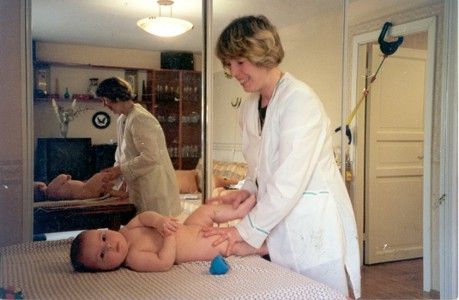Medical expert of the article
New publications
Joint pain in children
Last reviewed: 04.07.2025

All iLive content is medically reviewed or fact checked to ensure as much factual accuracy as possible.
We have strict sourcing guidelines and only link to reputable media sites, academic research institutions and, whenever possible, medically peer reviewed studies. Note that the numbers in parentheses ([1], [2], etc.) are clickable links to these studies.
If you feel that any of our content is inaccurate, out-of-date, or otherwise questionable, please select it and press Ctrl + Enter.
Joint pain in children of different ages can occur for many different reasons. It can appear as a result of the natural growth and development process of the child. In addition, it can be accompanied by rigidity, decreased mobility. Joint pain in children can be the result of a sprain, strain, fracture, dislocation or Osgood-Schlatter disease, the course of which becomes more severe due to sports activities. Slightly damaged (stretched or twisted) muscles, ligaments and tendons for the most part remain as elastic and functional as before, and, as a rule, they only need rest to heal. Because with more serious injuries, tissues can be torn in places or completely, and in order to fully recover, surgical intervention may be needed.
Joint pain in children can also be caused by arthritis (inflammation of cartilage, ligaments and tendons), muscle inflammation (myositis), bacterial bone infection (acute arthritis, osteomyelitis) and sometimes tumors (bone cancer). With proper diagnosis and treatment, joint pain caused by most of these causes is cured and disappears without any complications (joint dislocation).

 [ 1 ]
[ 1 ]
Diseases that cause joint pain in children
- Septic joint inflammation (arthritis). This disease can be caused by streptococci, staphylococci, the flu virus and other common infections. As a rule, large joints are affected. The disease suddenly begins with fever, then swelling of the joint, pain when moving, painful sensations when touching occur. If the knee joint is affected, the child will limp.
- Rheumatism. This disease occurs due to an acute upper respiratory tract infection. The typical form of rheumatism manifests itself as fever and joint pain in children. As a rule, large joints are affected: wrist, elbow, ankle and knee. The pain is characterized by a volatile nature, the ability to move from joint to joint. Redness of the skin and swelling may appear around the affected joint, but irreversible changes do not occur. If the course of the disease is prolonged, so-called rheumatic nodules appear around the joint. They look like dense, lentil-sized formations. They appear, as a rule, in places that are subject to pressure: the elbow bend, wrist, forearm, knee. Specific rashes may appear on the skin of a child suffering from rheumatism: pale reddish, curved or ring-shaped spots, as well as narrow stripes. If the disease continues to progress, a serious heart defect develops.
- Chronic arthritis lasts at least 6 weeks. The most common form of chronic arthritis in children is juvenile rheumatoid arthritis, but there are about 50 rare forms, including those that accompany chronic lupus erythematosus (an inflammatory disease of the skin, joints, and internal organs) and juvenile ankylosing spondylitis (inflammatory arthritis of the spine). Arthritis is characterized by the sequential appearance of pain, stiffness, warmth, redness, swelling, and eventually some decrease in the functional activity of one or more joints. Limitation of the mobility of the diseased joint can be caused by muscle spasms or fluid accumulation around the affected joint. If juvenile rheumatoid arthritis is considered, then symptoms include general weakness, in particular fever, rashes, lethargy, and loss of appetite. All this occurs before the joints are involved in the disease and lasts up to 6 months.
- Serum sickness. This disease is an allergic reaction to the introduction of medicinal serums or drugs (for example, penicillin, aspirin, etc.). It usually appears 6-12 days after the child has come into contact with the disease provocateur. The main symptoms are: joint pain (arthritis), fever, muscle pain, skin rash (urticaria), itching, swelling of the face and neck.
- Joint injuries. Usually, pain is felt only in one joint. It swells, deforms, and turns red or bluish. Movement in the affected joint is limited and accompanied by pain. Sharp pain occurs with physical exertion on the affected joint. Very young children (1-4 years old) often have a subluxation of the elbow joint of a traumatic nature, for example, when falling, when the child is "dragged" by the arm. This causes a rupture of the annular ligament where it attaches to the radius of the forearm, and its clamping between the radius and the head of the humerus. As a result, the child stops moving his arm and holds it slightly bent at the elbow and twisted in the forearm area inward around its axis.
- Tuberculous arthritis. This disease most often affects the hip joint. The disease initially manifests itself in the form of symptoms such as mild lameness and pain when walking, which radiates to the middle of the thigh or knee. After a certain time, hip movements become limited in any direction, swelling is observed around the joint. The affected hip takes a bent form, presses against the other leg and turns slightly inward. If the spine is affected, the child may complain of pain in the place that is innervated from the affected area of the spinal cord. It is very difficult for him to lift objects on the floor, he walks with great caution, practically on tiptoe, keeps his body straight. He lies on his stomach more often.
- Cervical arthritis. This disease causes a wry neck, and the child has to support his head with his hands. If this process affects the thoracic spine, a hump usually develops.
So, if you notice joint pain in children, you need to urgently consult a doctor of the appropriate profile. After all, the sooner an accurate diagnosis is made, the faster you can cope with the disease.

